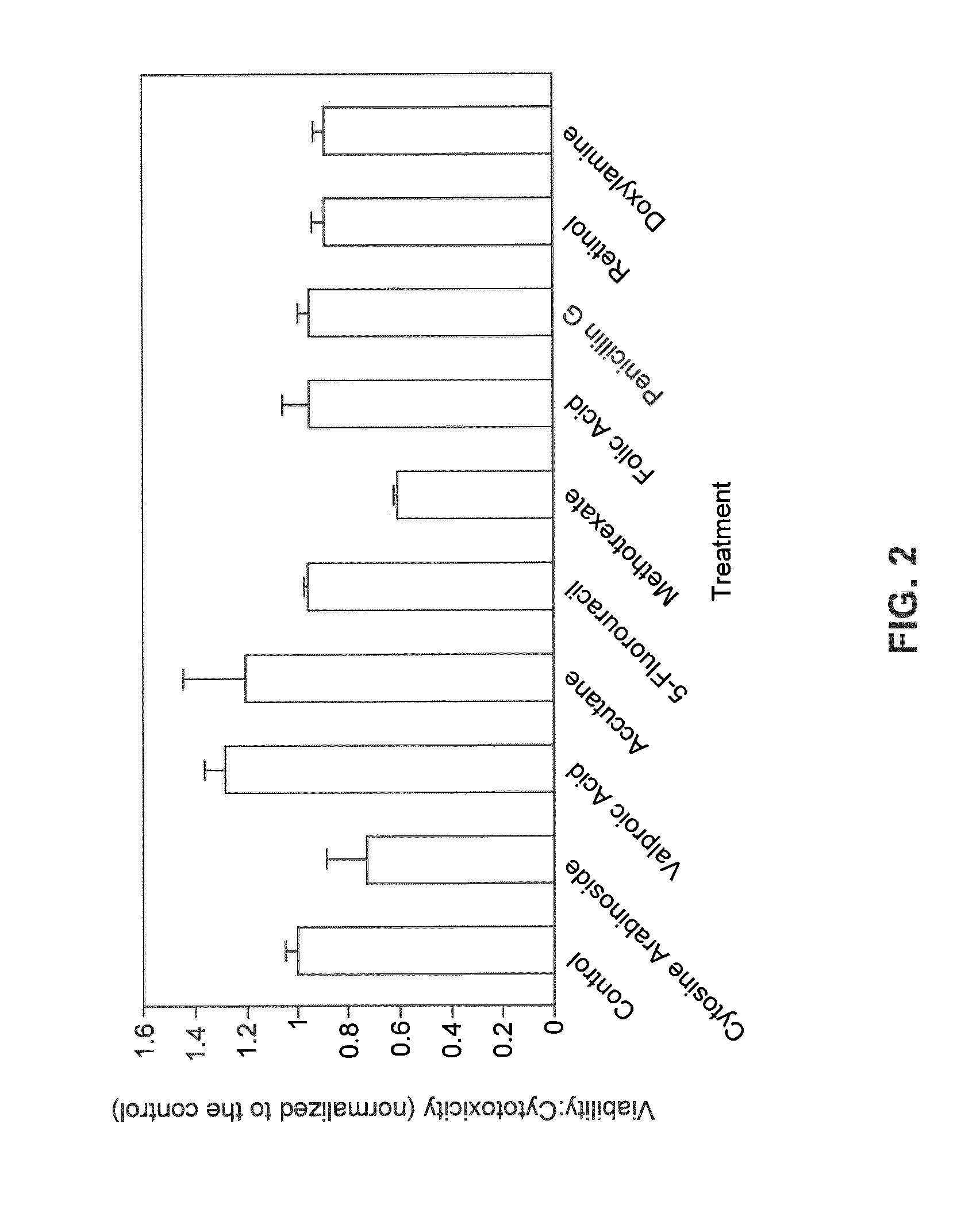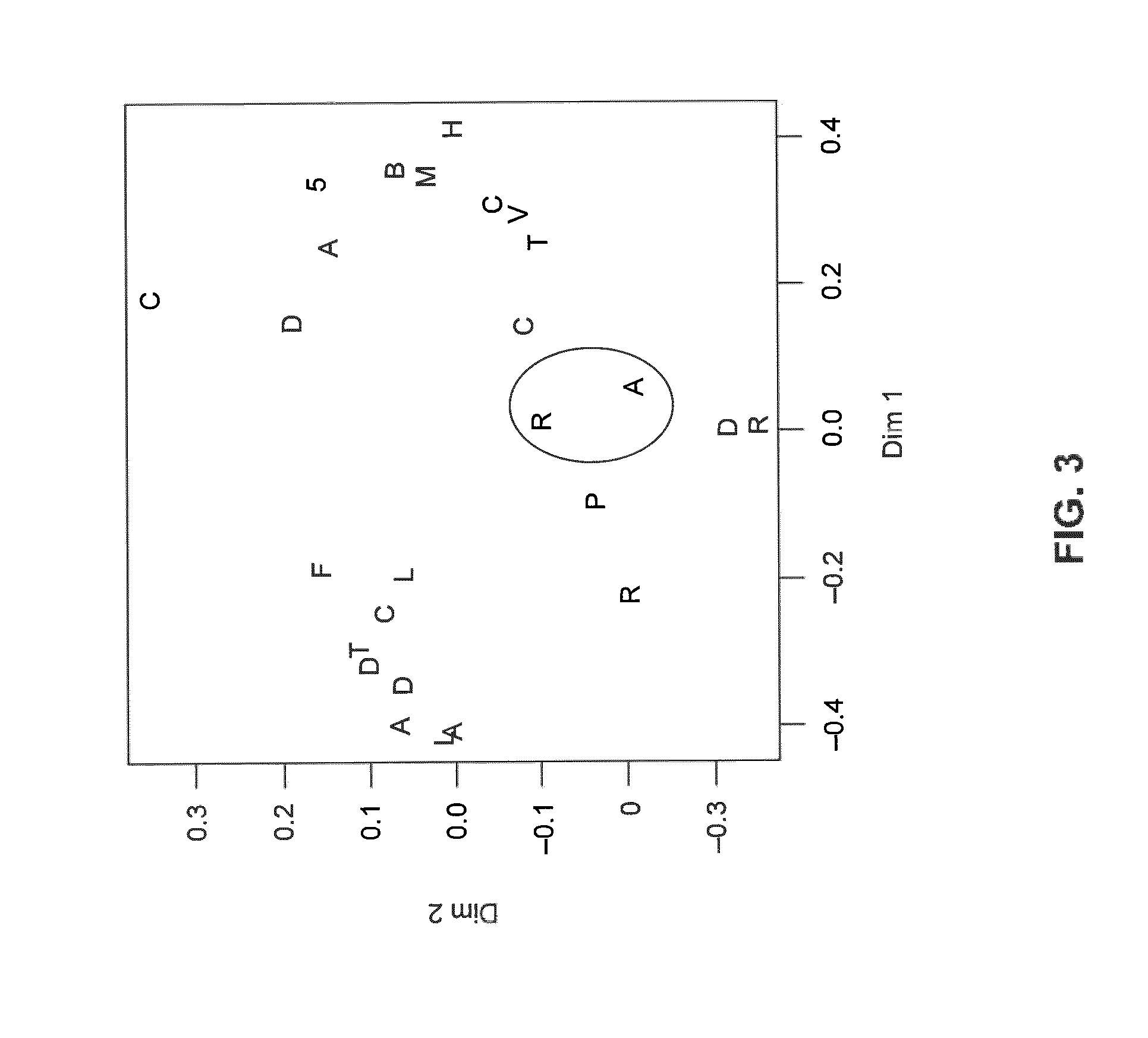Predicting human developmental toxicity of pharmaceuticals using human stem-like cells and metabolomics
a technology of human stem-like cells and metabolomics, applied in the field of toxicological screening of pharmaceuticals, can solve problems such as difficult evaluation, cognitive disorders, and robust and efficient models
- Summary
- Abstract
- Description
- Claims
- Application Information
AI Technical Summary
Benefits of technology
Problems solved by technology
Method used
Image
Examples
example 1
hES Cell Culture
[0185]WA09 hESCs, obtained from WiCell Research Institute (NIH National Stem Cell Bank, Madison, Wis.) were cultured in 6-well plates on Matrigel (BD Biosciences, San Jose, Calif.), in mTeSR1 medium (Stem Cell Technologies, Vancouver, BC) incubated at 37° C. under 5% CO2 in a Thermo Electron Form a Series II Water Jacket CO2 Incubator. hESCs were passaged every three or four days at a 1:3 or 1:6 seeding density for routine culture conditions. For dosing experiments, hESCs were passaged at a low density of 1:10 or 1:12 so that they would not require passaging during the seven-day dosing protocol. To passage hES cells, the StemPro® EZPassage™ disposable stem cell passaging tool (Invitrogen, Carlsbad, Calif.) was used to detach the cells from the wells. Detached cells were removed with a pipette and distributed to new Matrigel plates.
example 2
hES Cell Dosing
[0186]A training set of established teratogens and non-teratogens (Table 2) was used to dose hESCs. The training set is a collection of chemical standards that includes compounds that had been previously used in multicenter efforts aimed at developing and validating novel alternatives to predict developmental toxicity, such as the EST, proposed by the ECVAM agency.
[0187]All tested chemicals were purchased from Sigma-Aldrich (St. Louis, Mo.). Cells were dosed with drugs at a concentration equivalent to their published serum circulating therapeutic dosages. Dosing was performed on hESCs in 6-well plates in triplicate, i.e. three wells per plate. The plates were dosed in triplicate, so there were a total of nine dosed wells. In parallel, there were nine “control” wells, in which hESCs were cultured with mTeSR1 containing no drug, and three wells containing Matrigel with mTeSR1 medium without hESCs that served as medium controls. Lastly, three wells of dosed medium contro...
example 3
hES Cell Viability Assays
[0192]In addition to determining teratogenicity by molecular endpoints, with metabolomics, cell viability was examined using a subset of the drugs to determine if a correlation exists between cell death and compound teratogenicity. In particular, the viability assay was conducted to address the concern that the metabolic endpoints may be strongly correlated with cell death rather than developmental toxicity since dosing with the antineoplastic drugs cytosine arabinoside and 5-fluorouracil often resulted in the most profound changes in many metabolites.
[0193]Cell viability assessment in response to exposure to chemical compounds was examined using the MultiTox-Fluor Assay (Promega, Madison, Wis.), which simultaneously measures cell viability and cytotoxicity. WA09 hESCs were seeded at a density of 250,000 cells / well in a 96-well plate. Cells were fed with dosed media daily, for four days. On the fourth day, spent medium was removed, 100 μL of fresh medium was...
PUM
| Property | Measurement | Unit |
|---|---|---|
| molecular weight | aaaaa | aaaaa |
| molecular weight | aaaaa | aaaaa |
| molecular weight | aaaaa | aaaaa |
Abstract
Description
Claims
Application Information
 Login to View More
Login to View More - R&D
- Intellectual Property
- Life Sciences
- Materials
- Tech Scout
- Unparalleled Data Quality
- Higher Quality Content
- 60% Fewer Hallucinations
Browse by: Latest US Patents, China's latest patents, Technical Efficacy Thesaurus, Application Domain, Technology Topic, Popular Technical Reports.
© 2025 PatSnap. All rights reserved.Legal|Privacy policy|Modern Slavery Act Transparency Statement|Sitemap|About US| Contact US: help@patsnap.com



